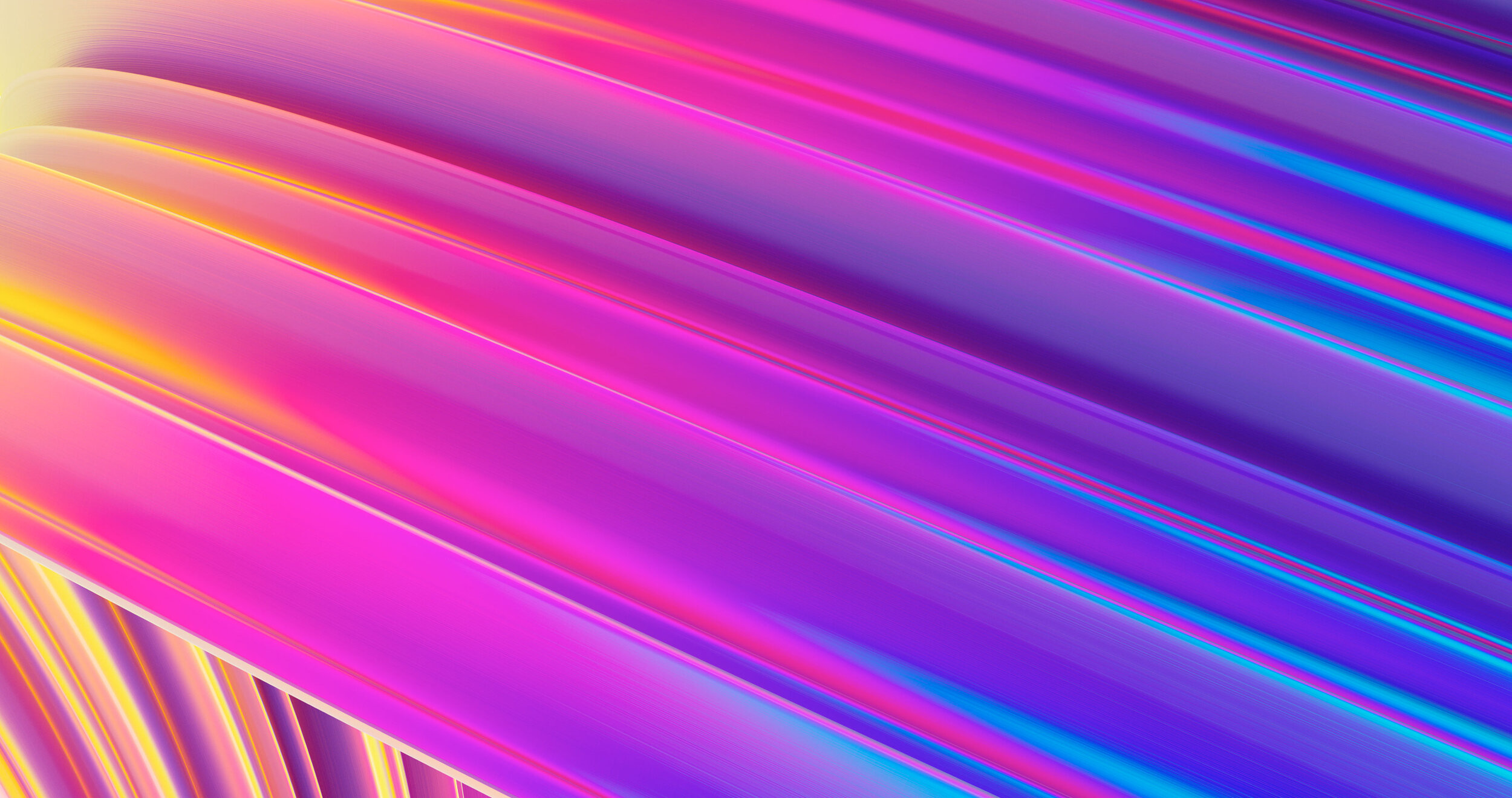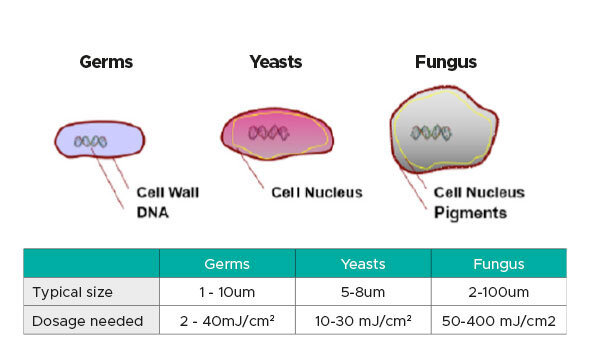
The science. Explained.
What is UV-C?
How does it kills bacteria & viruses?
Ultraviolet (UV) light is produced naturally by the sun. Ultraviolet is a spectrum of light just below the visible range and it is split into four distinct spectral areas, of which UV-C is one.
Fig. 1
Fig. 2
The UV-C Spectrum
The entire UV spectrum can to some extent kill or inactivate microorganism species like bacteria, viruses, spores and protozoans.
It does this by preventing them from replicating, but the most effective, UV light - UV-C, does not naturally reach the Earth’s surface (fig.1).
High-intensity UV-C light, generated by special fluorescent tubes at a wavelength of 253.7 nanometers provides a germicidal effect many thousands of times greater than UV in nature; this is the technology used in Uvisan products. The application of UV-C energy to inactivate microorganisms is also known as Germicidal Irradiation or UVGI.
How UV-C kills bacteria & viruses
UV-C exposure inactivates microbial organisms such as bacteria and viruses by destroying their DNA, the ‘blueprint’ these organisms use to develop, function and reproduce (fig.2).
By removing the organism’s ability to reproduce, it is rendered harmless. After UV-C exposure, each individual organism dies off and with no offspring the entire population of microorganisms dies too.
Fig. 3
Uvisan UV-C Effectiveness
The effectiveness of germicidal UV depends on the duration, intensity, and wavelength of the UV-C the microorganism is exposed to, and to the organism’s size and opacity.
The rule of thumb is: the larger the microorganism the higher is the UV-C dose required for deactivation (fig.3). Uvisan cabinets have been calibrated to be effective using a pre-set 2-minute UV-C exposure time against a wide range of microorganisms. The cabinets can be programmed for longer cycles too. Uvisan Cleanroom solutions are designed before installation to provide the correct dose for the room to be disinfected.
Uvisan Surface Disinfection
The success of surface disinfection is dependent on the type of the material to be disinfected.
This not only relates to the type of microorganism, but also to the texture of the surface. Disinfection can only occur if the microorganisms can ‘see’ the UV-C. Microorganisms which are in shadow will not be treated due to the limited exposure to
UV-C. Uvisan cabinets are designed to minimise shadowed areas by bouncing the UV-C light around the inner space to designed to minimise shadowed areas by bouncing the UV-C light around the inner space to reach these areas.

“Without it there is no realistic way we could have operated in a Covid secure way"
“The UVISAN cabinet allowed us to run the UK HADO Championship this year. Without it there is no realistic way we could have operated in a Covid secure way and still kept even close to timetable."
Jim Sephton, Director, UK HADO”




